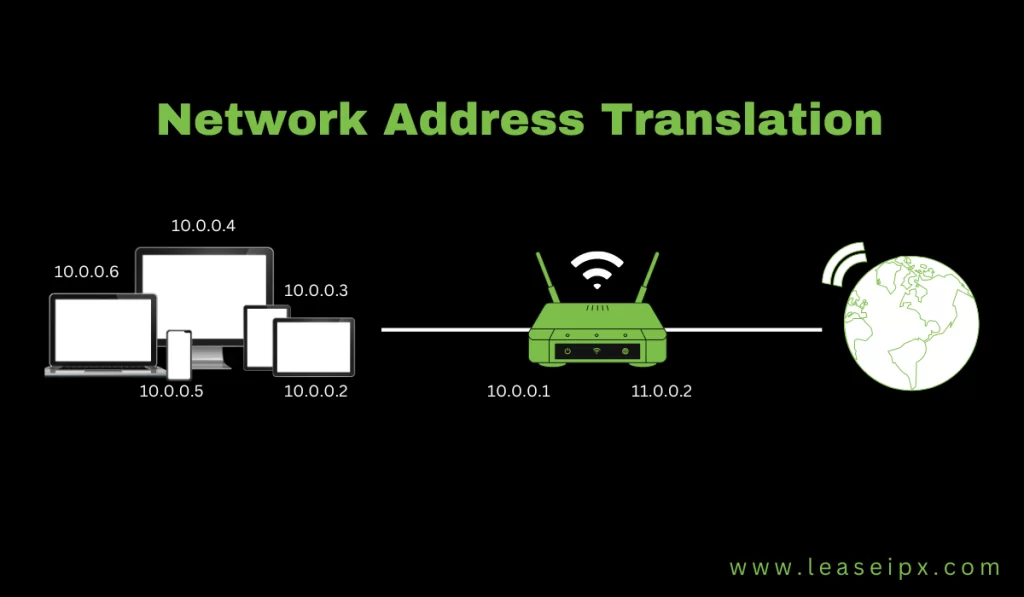In the world of networking, Network Address Translation (NAT) plays a crucial role in enabling communication between devices within a network and the wider internet. With the proliferation of devices and the limited availability of IPv4 addressesi, NAT serves as a vital mechanism for conserving IP addresses and facilitating connectivity. In this blog, we will delve into the intricacies of NAT, its functions, benefits, and various types, focusing primarily on its role in IPv4 addressing.
Understanding IPv4 Addressing
Before diving into NAT, it is essential to grasp the fundamentals of IPv4 addressing. Internet Protocol version 4 (IPv4) is the most widely deployed network layer protocol and uses a 32-bit address space, allowing for approximately 4.3 billion unique IP addresses. However, with the exponential growth in internet-connected devices, the supply of available IPv4 Addresses has become increasingly scarce, leading to the need for mechanisms like NAT to address this limitation.
What is Network Address Translation (NAT)?
Network Address Translation is a technique used to translate private IP addresses used within a local network into public IP addresses used on the internet, and vice versa. NAT operates at the network layer of the TCP/IP protocol suite, typically residing in routers or firewall devices. Its primary purpose is to overcome the limitations imposed by the scarcity of public IP addresses by allowing multiple devices within a private network to share a single public IP address.

The Functions of NAT
NAT serves multiple key functions within a network infrastructure:
- IP Address Conservation: NAT allows organizations to use private IP addresses internally, which are not globally routable. This conservation of IP addresses is particularly important in networks with a large number of devices, such as home networks or enterprise environments.
- Hiding Internal Network Structure: NAT helps conceal the internal network structure from the outside world by presenting a single public IP address for all devices within the network. This enhances security by limiting the exposure of internal devices to potential threats.
- Enabling Internet Access: NAT facilitates internet access for devices within a private network by mapping private IP addresses to a single public IP address. Outgoing packets from the internal network are modified by the NAT device to include the public IP address before being forwarded to the internet.
- Port Address Translation (PAT): A variant of NAT, known as Port Address Translation or Network Address Port Translation (NAPT), allows multiple devices to share a single public IP address by using different ports. This is achieved by assigning unique port numbers to each device’s outgoing traffic, enabling the NAT device to route incoming responses back to the correct device.
Types of NAT
NAT can be implemented in different ways, depending on the specific requirements of the network:
- Static NAT: In Static NAT, a one-to-one mapping is established between a private IP address and a public IP address. This type of NAT is commonly used when specific devices within the network need to maintain consistent public IP addresses for purposes such as hosting servers or providing external services.
- Dynamic NAT: Dynamic NAT allows a pool of public IP addresses to be assigned dynamically to devices within the private network as needed. This dynamic allocation of addresses helps conserve public IP addresses while still enabling internet connectivity for all devices.
- Overloading NAT (PAT/NAPT): Overloading NAT, also known as Port Address Translation (PAT) or Network Address Port Translation (NAPT), is the most commonly used form of NAT. It maps multiple private IP addresses to a single public IP address by utilizing unique port numbers to distinguish between devices. This approach enables many devices to share a single public IP address simultaneously.
Benefits of NAT
The utilization of NAT in IPv4 addressing brings several advantages to network administrators and organizations:
- Address Conservation: By allowing multiple devices to share a single public IP address, NAT significantly conserves the limited pool of available public IP addresses. This is particularly beneficial in scenarios where large numbers of devices need to connect to the internet.
- Enhanced Security: NAT acts as a firewall by hiding the internal network structure, making it harder for external entities to directly access internal devices. This provides an additional layer of security against potential attacks.
- Simplified Network Design: With NAT, organizations can use private IP addresses internally, eliminating the need to obtain a large number of public IP addresses. This simplifies network design and reduces the complexity of managing IP address assignments.
- Seamless Internet Connectivity: NAT enables devices within a private network to access the internet using a single public IP address. This eliminates the need for each device to have a unique public IP address, making it easier to establish internet connectivity.
Challenges and Limitations of NAT
While NAT offers significant benefits, it also presents a few challenges and limitations:
- Impact on Peer-to-Peer Applications: Some peer-to-peer (P2P) applications, such as certain video conferencing or gaming platforms, rely on direct communication between devices. NAT can introduce complexities in establishing direct connections, requiring additional techniques like Universal Plug and Play (UPnP) or port forwarding.
- IP Address Dependency: NAT introduces a dependency on the availability and functionality of the NAT device. If the NAT device fails or becomes overloaded, it can disrupt network connectivity.
- Protocol Limitations: Certain protocols, such as IPsec or some application-layer protocols, may have difficulties traversing NAT due to the modification of IP addresses and ports by the NAT device. Additional configuration or the use of specific traversal techniques may be necessary.
- IPv6 Transition: NAT is primarily used in IPv4 addressing due to the limited availability of IPv4 addresses. As the transition to IPv6 occurs, which provides a much larger address space, the need for NAT diminishes. However, it is important to note that NAT may still be utilized in IPv6 deployments for other purposes, such as providing network security or facilitating network segmentation.
Conclusion
Network Address Translation (NAT) plays a vital role in IPv4 addressing by conserving public IP addresses, enabling internet connectivity for devices within private networks, and enhancing network security. Through its various types, such as static NAT, dynamic NAT, and overloading NAT (PAT/NAPT), NAT offers organizations the flexibility to manage their network infrastructure efficiently. While NAT brings numerous benefits, it also poses certain challenges, such as complications with peer-to-peer applications and protocol limitations. As the world continues to transition towards IPv6, the role of NAT may evolve, but its contributions to IPv4 addressing remain significant in the current networking landscape.
FAQs
Why is NAT necessary in IPv4 addressing?
NAT is necessary in IPv4 addressing because the number of available public IPv4 addresses is limited, while the demand for IP addresses keeps growing. NAT allows multiple devices in a private network to share a single public IP address, thereby conserving Public IP Address space.
Is NAT still relevant in IPv4 addressing with the adoption of IPv6?
While IPv6 provides a vast address space, NAT still remains relevant and necessary in IPv4 Addressing, even with IPv6 deployment. NAT can still be used in IPv6 networks for reasons such as network security and simplified address management.





